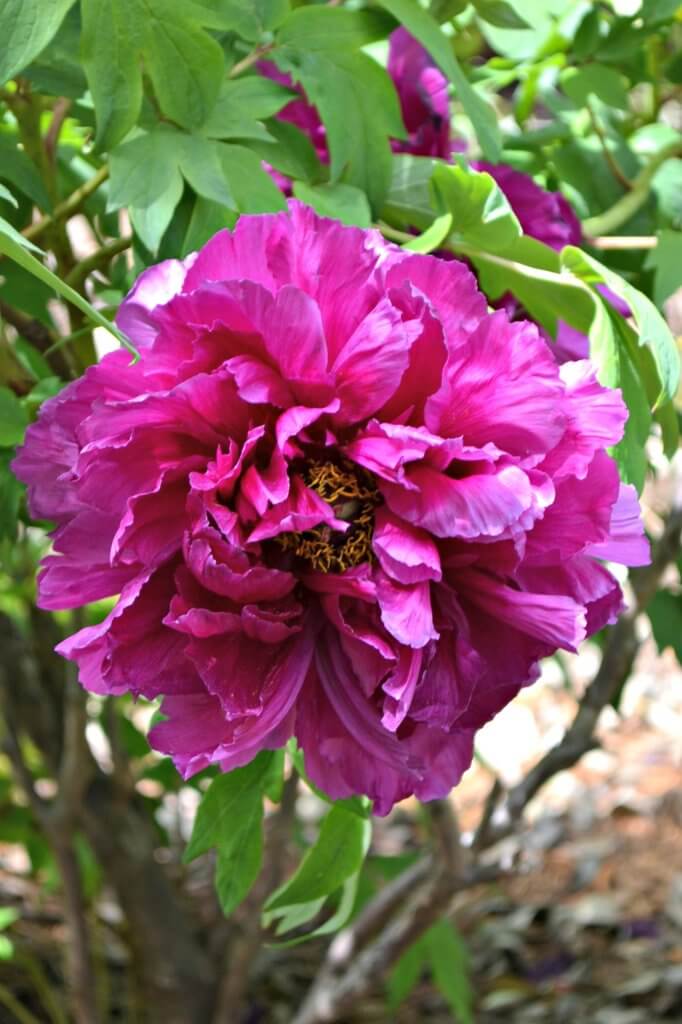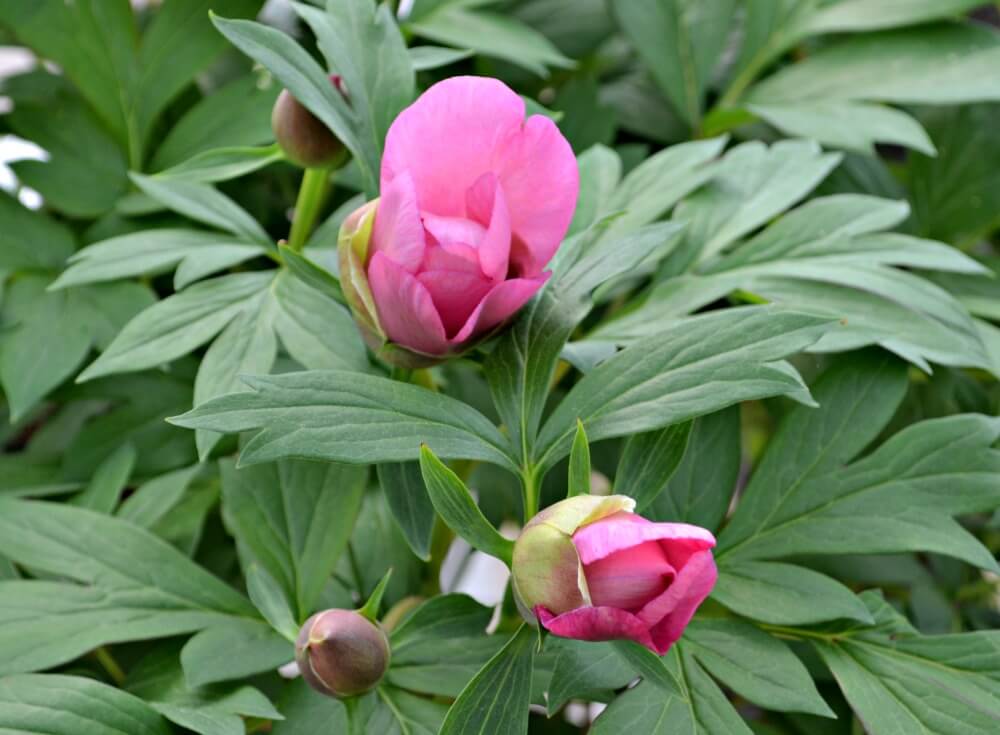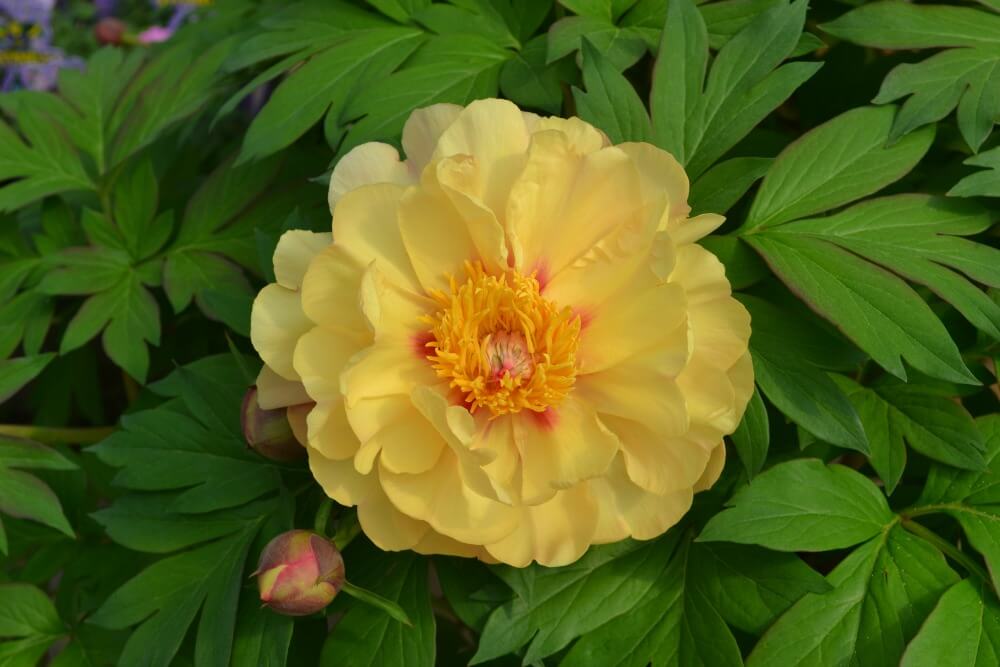Peonies
Herbaceous Peonies
Paeonia lactiflora
Peonies are known to be one of the most popular perennials inAmerica. They are known to be very long lived, have large, showy, fragrant blooms, and are wonderful used in flower arrangements. When not in bloom, their attractive foliage makes them useful in the garden all season. Peonies can be used as specimens in borders and are spectacular planted in masses.

Most herbaceous peonies grow two to three feet tall, and have a three to four foot spread, once mature. They prefer to be in lots of sun (at least six hours of direct sun each day for full bloom) and will flourish with some afternoon shade. The large flowers are produced in mid to late spring and the foliage will go dormant in the winter.
One of the biggest attractions to the peony is its long life. However, remember the key to longevity is how they are planted.

TUBERS
- Plant the bare root tubers in early fall.
- Well drained, loamy soil is best for good growth. If starting with clay, be sure to add well rotted manure, compost and bone meal, as needed.
- It is very important not to plant the bare root tubers too deep. It is recommended that the ‘eyes’ of the tubers be buried no more than two inches below the soil (one inch in zone 8). If you plant tubers too deep, you will have foliage but no flowers.
- Be sure eyes face upward and roots face downward.
- Remember to take into account the size of the mature plant so they aren’t crowded
- Mulch the area in early winter to avoid frost heaving the tubers out of the ground.
- It sometimes takes two years after planting tubers before any flowers are produced.
- Support is usually needed for tall, double flower hybrids.
MAINTENANCE
Be sure to remove dead foliage before winter. Doing so will help to keep your peonies free from pests and fungus. The fungus disease botrytis is sometimes a problem in humid weather. Symptoms of botrytis include: buds blacken and fail to develop, stems wilt and collapse. To avoid this problem, make sure to clean your peonies very well in the fall, and as new growth emerges in the spring, dust with a copper-based fungicide.
Rabbits and deer tend to stay away from peonies, but ants do not. They are attracted to the sweet sap produced by the peony bud. Though, rest assured, ants are not harmful to the plant. Simply allow them to enjoy the sap of the bud and once the plant flowers, the ants will move on.

FUN FACT: It is a myth that ants are necessary to permit peonies to bloom.
Many people prefer to purchase peonies when they are in bloom so they get just the right color. During the spring, you will find a good selection of established peonies at Fairview Garden Center. We frequently are stocked with varieties that do well in the south, as well as several of the all-time favorite varieties.
Colors vary from whites, pinks and reds. ‘Festiva Maxima,’ a white bloomer with red tips, and ‘Sara Bernhardt,’ a pink bloomer, are favorites for growing in the south. ‘Sarah Bernhardt’ and ‘Sorbet’ are favorites for their intense fragrance.
Peonies live far longer than the gardeners who plant them. With proper soil preparation, good maintenance, and a little patience, many generations to come will enjoy the peonies you plant today.




